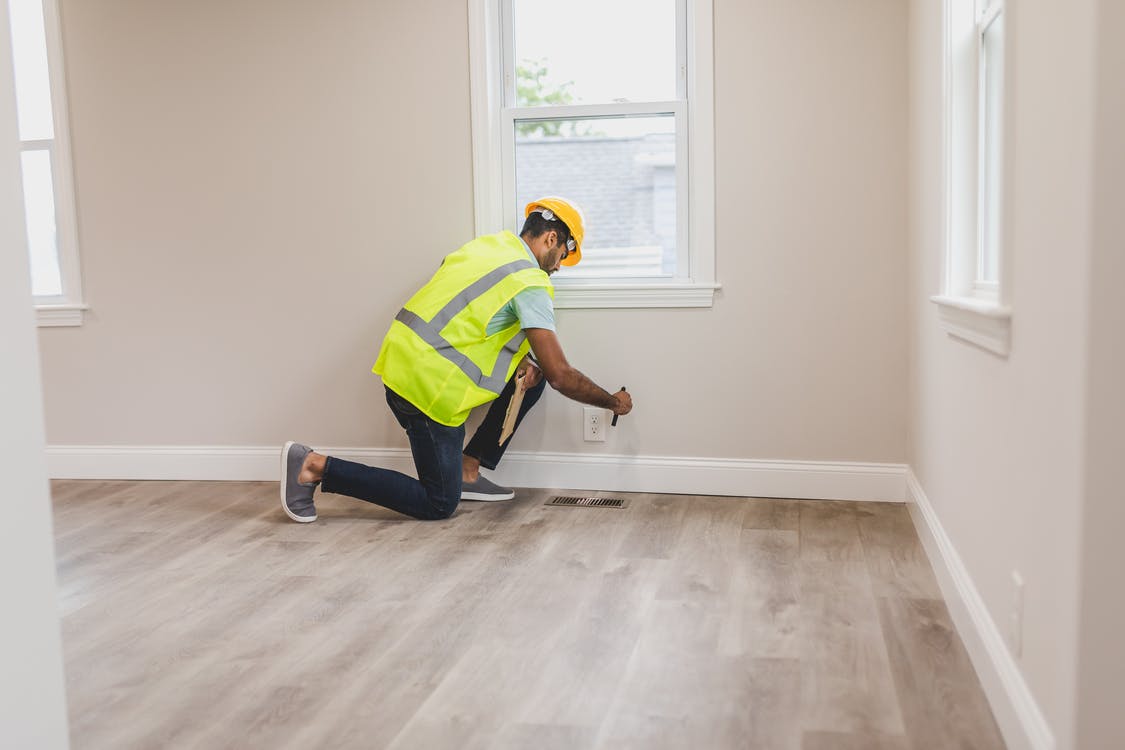Setting the record straight on what counts as fair wear and tear
by Jax Kneppers
Fair wear and tear is the most misunderstood area of the rental process and many agents and landlords still have unrealistic expectations on the deductions that can and can’t be made from the tenant deposit. It is a commonly held view in the lettings industry and in the courts that the House of Lords has stated that a tenant cannot be held responsible for damage at the end of a tenancy caused by ‘reasonable use of the premises and the ordinary operation of natural forces’ (*Source: Talbot J in Haskell v Marlow (1928) – used subsequently by numerous courts).

Landlords and letting agents may hold the view that a tenant is responsible for repainting the whole property at the end of their tenancy, but the law may not agree. A tenant on the other hand may believe that all the marks, pin holes and damage to the interior walls at time of check-out will be covered by normal wear and tear. The same viewpoint is often applied when assessing damage and wear to the contents of the property and its fixtures and fittings.
Landlords and agents have to make decisions regarding chargeable issues and normal fair wear and tear every time a tenant checks out of a property. They must have a clear idea about wear and tear and be able to justify their recommendations.
There are two key things to remember with wear and tear. Firstly, the tenant has a duty of care to return a property in the same condition at the end of the tenancy as found at the start and as listed on the initial inventory report – with allowance for fair wear and tear. Secondly, the law does not allow for betterment or ‘new for old’ when assessing the action needed to be taken after a check-out inspection. If an item was old at check–in and after a two-year tenancy there is some additional
damage, the law will not allow a landlord to simply replace this item with a new one. Instead, some sort of compensation is allowable towards future replacement. This betterment principle applies to cleaning issues as well. If a carpet was badly stained at time of check-in, a landlord cannot expect the tenant to pay for cleaning at time of check-out, no matter how long the tenancy has been.
Landlords and agents should always encourage tenants to be present at any check-out inspection and they should be made aware of all the issues that are raised in a check-out report. This includes cleaning, damage to items listed on the inventory, additional gardening or missing items. This discussion will inevitably include the subject of fair wear and tear. The new tax measures for wear and tear that were introduced in April 2016 allow landlords to only make a claim for the amount they have spent on the property, whereas before they were able to claim tax relief on 10% of their rental profits, even if they did not do any work. This may result in some landlords and agents attempting to charge tenants for normal wear and tear compensation for the lost tax relief.
Our inventory software ensures landlords and agents have a bulletproof inventory that records the property check-in condition status. The software provides a side-by-side comparison report which clearly demonstrates any change in condition of the property, illustrated with date and time stamped photographs.
The software also gives landlords and lettings agents all the necessary property maintenance and repair costs for damage that is found during inspections. This allows landlords and agents to have a dialogue with the tenants over any repair costs that are found to be the tenant’s responsibility. It also presents landlords and agents with all the facts, so they are able to make decisions on whether they want to delay repairs, or carry out them quickly.
So what can a landlord or agent expect a tenant to fund from their deposit for fair wear and tear? Below are some helpful guidelines:
- Cleaning: This covers all rooms, especially kitchens and bathrooms. If an oven is dirty, for example, then the tenant can be charged for it to be professionally cleaned. Cleaning is never a wear and tear issue. If something can be cleaned, then it should be, at the tenants’ cost, providing there is documentary evidence in the form of a detailed inventory to prove the item was clean at time of check-in.
- Damage: Any damage to the property and its contents can be charged to the tenant. Common and expensive damage includes burns to carpets and floorings, chips and cracks to baths and sinks, serious scratches to ovens, cracked and broken windows, and burns to kitchen worktops.
- Walls: If the tenant has painted the property with a non-neutral colour without the landlord’s permission, then the cost of repainting can be charged to the tenant. Any serious damage caused to walls and ceilings will also fall under the tenant’s responsibility. A recent case involved a tenant who had painted a huge ‘Lion King’ mural on the walls of one bedroom. He had to cover the cost of repainting the room in the original neutral colour as the landlord had not given permission for any artwork.
- Gardens: Tenant’s play equipment, swimming pools and trampolines can cause large areas of damage to lawns, as can dogs and other animals. This is not a wear and tear issue and the tenant must be held responsible for making good the damaged areas.
Imfuna Let produces an inventory that records property check-in condition status, and can also be used for mid-term property inspections. Imfuna Let is the complete digital property inspection system automating the reporting process, reducing the overall process from property data capture to report generation by up to 75%. Imfuna Let can be used on current Apple or Android devices.
Embrace the ‘Power of Digital’ in 2016
Free Trial at www.imfuna.com/let-uk/









